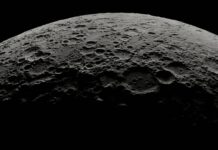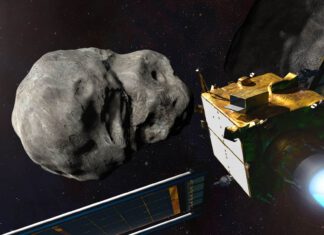
Mars and Its Turbulent Weather
Mars is renowned for its fierce weather conditions, which can be quite extreme even within our solar system. Researchers have now introduced an innovative method that is ten times faster and more accurate in measuring Martian winds. This advancement is crucial if we aim to send astronauts to Mars.
During a Martian day, which lasts 24 hours and 37 minutes, temperatures fluctuate dramatically. The average temperature is around minus 62 degrees Celsius. The surface of our red neighboring planet is covered in red dust and is characterized by craters, canyons, and volcanoes. Additionally, the atmosphere is extremely thin, with just about 1 percent of Earth’s atmospheric density. What impact does this have on the wind, and what does a Martian breeze or storm actually sound like in reality?
Martian Winds
Scientists are keen to achieve precise and rapid wind measurements on Mars to better anticipate atmospheric conditions during future missions. This would make flying devices like the Ingenuity helicopter, which recently flew on Mars, much more predictable.
Clearly, measuring wind speeds on Mars is no simple task. To date, Martian landers have conducted wind measurements by assessing the cooling rates of heated materials when wind passes over them or by using cameras to capture ‘tell tales,’ small ribbons or strings that move with the wind to visualize airflows. While these methods provide valuable insights into Martian climate and atmosphere, improvements are necessary, especially given the advanced plans to send astronauts to Mars. The desired leap in speed and accuracy has now been successfully achieved.
Piezo-Electric Sensor
In recent research, Canadian and American scientists have collaborated to develop a groundbreaking sonic system. This system uses two piezo-electric transducers to measure the travel time of sound pulses through the thin Martian air.
“By measuring the differences in the speed of sound—both forward and backward—we can accurately measure the wind in three dimensions,” explains lead researcher Robert White. “The two major advantages of this method are that it is incredibly fast and works exceptionally well at low wind speeds.”
Turbulence and Fluctuating Winds
The researchers hope to achieve up to one hundred wind speed measurements per second in the future, and even capture small breezes of just 1 centimeter per second. This is a significant improvement compared to previous methods, which could barely register one wind speed per second and struggled to detect speeds under 50 cm/s. “By measuring quickly and accurately, we hope to capture not just average wind speeds, but also turbulence and fluctuating winds,” says White. “This way, we gain more insight into the atmospheric variables that can pose challenges for small vehicles, like the Ingenuity helicopter that recently flew on Mars.”
The researchers tested the ultrasonic transducers and sensors across a wide temperature range and at different low-pressure levels under the influence of carbon dioxide, the main atmospheric gas on Mars. They found that temperature and pressure changes cause only minimal error margins in the system.
Future Mars Missions
“The method we are developing will be ten times faster and ten times more accurate than anything previously used,” boasts White. “We hope that this device will yield valuable data for future missions to Mars and provide useful information about the Martian climate. Perhaps, through this, we can even better understand the climate on our own planet.”











